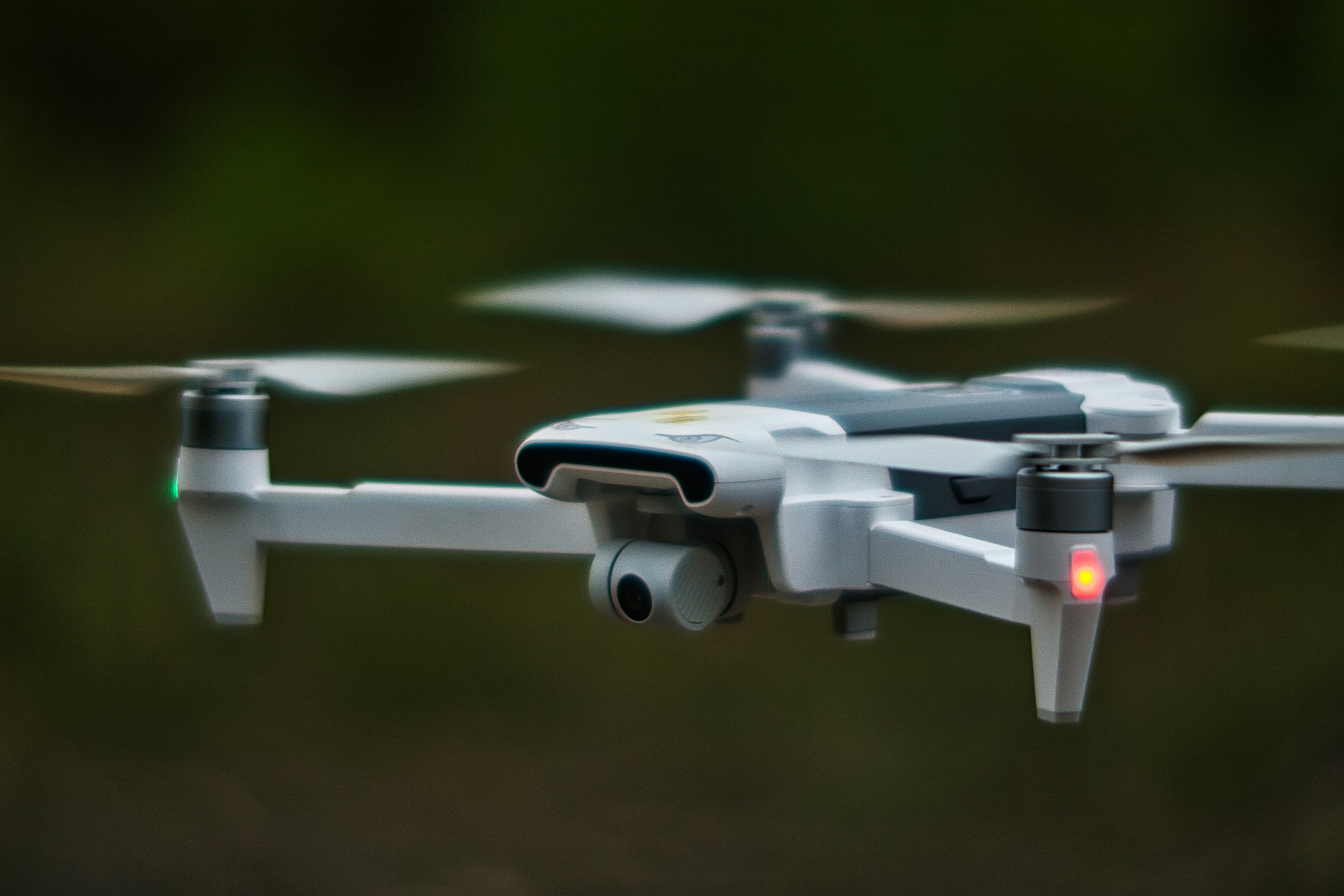
UAV (Drone) Sector Predictions for the Next 5 Years: Technological Progress, Emerging Applications, and the Evolving Job Market
Unmanned Aerial Vehicles (UAVs)—colloquially known as “drones”—have moved well beyond their roots in military operations to become indispensable tools for commercial, industrial, and consumer applications. As hardware becomes more affordable and regulations evolve to accommodate new use cases, UAV technology stands poised for exponential growth. In the UK, both government initiatives and private-sector investments are driving innovation, creating a wealth of opportunities for professionals specialising in drone design, operations, data analysis, and more.
In this article, we explore key UAV sector predictions for the next five years, focusing on technological advancements, emerging applications, and how these developments will shape the UK job market. Whether you’re a drone pilot, an engineer, a data analyst, or simply curious about the future of UAVs, these insights will help you navigate a rapidly expanding industry at the cutting edge of modern technology.
1. The Expanding UAV Industry in the UK
1.1 Growing Commercial Adoption
Commercial drone usage has soared in recent years, with businesses recognising the efficiency gains and cost savings that UAVs can deliver. Industries like agriculture, construction, real estate, and film production have all embraced drones for surveying, aerial photography, and data collection. Over the next five years:
Mainstream Use of Inspection Drones: Infrastructure inspections (bridges, power lines, pipelines) will increasingly rely on UAVs, reducing both costs and safety risks.
Precision Farming: Drones equipped with multispectral sensors will drive advanced crop monitoring, targeted fertiliser application, and real-time yield estimations, transforming agricultural practices.
Media and Creative Industries: Aerial filming and photography continue to evolve, delivering dramatic visuals for marketing, events, and cinematography—demanding skilled UAV operators and creative professionals.
1.2 Government Initiatives and Regulation
The UK government has been proactive in shaping policies that balance innovation with public safety. Initiatives such as the Future Flight Challenge encourage research and collaboration to advance UAVs and urban air mobility. Meanwhile, the Civil Aviation Authority (CAA) issues guidelines and licensing frameworks for drone operations, including requirements for “Permission for Commercial Operations” (PfCO) and the newer Operational Authorisation under the Specific Category.
Increasing Regulatory Clarity: Over the next five years, expect more nuanced rules around airspace usage, flight altitudes, and BVLOS (Beyond Visual Line of Sight) operations, paving the way for advanced drone services.
Integration into Air Traffic Systems: The UK is working towards U-Space or Unified Traffic Management (UTM) solutions, enabling drones to safely coexist with manned aircraft in shared airspace.
Investment in R&D: Government-backed grants and industry-academic collaborations are likely to accelerate the development of drone technologies and associated data services.
1.3 Military and Defence Innovations
Even as commercial applications grow, military-related advancements remain a core driver of cutting-edge UAV technology:
Autonomous Swarming: Large numbers of small drones collaborating for surveillance, reconnaissance, or defence can offer strategic advantages.
Counter-UAV Solutions: As rogue drone usage poses security risks, the market for anti-drone systems—radar detection, jamming devices—will expand.
Dual-Use Technology Transfer: Breakthroughs in autonomy, sensors, and propulsion developed for defence often flow into the commercial sector, accelerating overall industry growth.
2. Key Technological Trends for the Next Five Years
2.1 Autonomy and AI Integration
Autonomous flight capabilities are advancing rapidly, thanks to machine learning, computer vision, and sensor fusion. Over the next five years, UAVs will become increasingly capable of self-navigation, real-time obstacle avoidance, and advanced decision-making. Key developments include:
AI-Driven Computer Vision: Object detection, terrain mapping, and pattern recognition systems enabling drones to adapt to complex environments with minimal human oversight.
Swarm Intelligence: Coordinated flight in groups, allowing drones to share data and complete tasks more efficiently—e.g., surveying large areas or performing search-and-rescue operations.
Predictive Maintenance: Onboard analytics that detect motor or battery anomalies, scheduling maintenance before a failure occurs, thus enhancing safety and uptime.
2.2 Extended Flight Times and Advanced Propulsion
Traditionally, limited battery life has restricted drone operational ranges. However, the next five years should see continued innovation in propulsion and energy storage:
Improved Battery Technologies: High-density lithium-ion, solid-state, or graphene batteries prolong flight durations, enabling more comprehensive missions in a single sortie.
Hybrid Systems: Combining fuel-powered engines with electric motors to extend range, critical for delivery drones or large-scale inspections.
Hydrogen Fuel Cells: Potentially enabling near-silent, emission-free flight with longer endurance than conventional batteries, though still in earlier stages of commercial adoption.
2.3 5G Connectivity and Edge Computing
The rollout of 5G networks across the UK paves the way for low-latency communications, crucial for drones requiring real-time control or data streaming:
Remote Operations: Pilots or operators can manage UAVs from greater distances, even beyond visual line of sight, with near-instantaneous feedback.
Edge Analytics: UAVs offload processing tasks—like object recognition or flight-path optimisation—to local edge servers, reducing onboard compute requirements.
Coordinated Fleets: Multiple drones can share sensor data and flight parameters almost instantly, opening the door to “drone-as-a-service” offerings.
2.4 Advanced Sensors and Payloads
UAVs are essentially flying sensor platforms. Continuous improvements in miniaturised payloads will broaden drone capabilities:
LiDAR: Highly accurate 3D mapping for construction, mining, and infrastructure projects, generating detailed digital twins.
Thermal Imaging: Ideal for search-and-rescue, firefighting, and industrial inspections, detecting heat anomalies or hotspots.
Hyperspectral Imaging: Going beyond the visible spectrum, beneficial for environmental monitoring, agriculture, and scientific research—uncovering chemical compositions or crop stress levels.
Delivery Mechanisms: Specialized payloads for dropping medical supplies, packages, or agricultural inputs with precision.
3. Emerging Applications and Opportunities
3.1 Delivery and Logistics
Companies like Amazon and UPS are prototyping drone delivery solutions, aiming to slash shipping times and costs:
Last-Mile Delivery: UAVs can bypass congested roads, offering rapid transport of small parcels to remote or urban locations.
Healthcare Supplies: Time-critical goods like vaccines, blood samples, or organs can reach rural clinics or disaster zones quickly.
Warehouse Operations: Indoor drones equipped with RFID or barcode scanners can automate inventory checks, reducing labour-intensive counting.
Though regulatory hurdles persist, the push for faster, greener deliveries will steadily drive interest in UAV-based logistics.
3.2 Agriculture and Environmental Conservation
Drones already play a significant role in precision agriculture, wildlife monitoring, and environmental science:
Field Monitoring: Farmers use UAV data to optimise irrigation, pesticide application, and fertiliser usage, cutting costs and environmental impact.
Reforestation Efforts: Specialized drones can drop seed “pods” to regenerate forests or rehabilitate degraded land at scale.
Wildlife Protection: Conservationists employ drones for anti-poaching patrols or tracking endangered species, capturing crucial data without disturbing habitats.
This intersection of environmental stewardship and drone innovation presents expansive job opportunities, particularly for data analysts and operators trained in ecological metrics.
3.3 Public Safety and Emergency Response
First responders increasingly harness UAVs for search-and-rescue, disaster assessment, and crowd management:
Rapid Reconnaissance: Thermal-equipped drones quickly locate missing persons, saving valuable time in emergencies like floods or building collapses.
Firefighting: UAVs can scout wildfires or city blazes, guiding ground crews and identifying safe entry points or water drop zones.
Law Enforcement: Police forces adopt drones to monitor large gatherings, traffic incidents, and crime scenes, though privacy considerations remain a concern.
The next five years will see a surge in public-service-oriented UAV roles, demanding certified pilots, real-time data analysts, and policy advisors who can balance security with civil liberties.
3.4 Inspections and Surveying
Inspection tasks are labour-intensive and sometimes hazardous, making UAVs a natural fit for such work:
Infrastructure: Drones assess wind turbines, solar farms, bridges, and pipelines for structural integrity, detecting cracks or corrosion.
Offshore Platforms: Conducting checks on oil rigs or wind farms reduces the cost and danger associated with sending human inspectors.
Geospatial Mapping: Surveyors use drones to create topographical maps, detect changes in landforms, or plan construction sites more accurately than ever before.
Professionals with backgrounds in civil engineering, GIS (Geographic Information Systems), and data processing tools will find abundant prospects in drone-based inspection services.
3.5 Creative and Entertainment Industries
Aerial cinematography has rapidly expanded beyond Hollywood blockbusters:
Event Filming: Weddings, concerts, festivals, and sports competitions rely on dynamic overhead shots for promotional content.
VR and Immersive Experiences: Drones capture 360-degree footage for virtual tours, real estate promotions, and marketing campaigns.
Light Shows: Drone swarms coordinated for night sky performances—a futuristic alternative to fireworks—are gaining popularity in major events.
Creative professionals adept at UAV piloting, lighting, and cinematic technique will be sought after in this niche yet growing market.
4. The Evolving UAV Job Market in the UK
With expanding commercial and public sector demand, UAV-related careers are diversifying. From hardware engineering to flight operation and data analysis, a wide range of roles is opening up across the UK.
4.1 In-Demand Roles
UAV Pilot / OperatorOften the face of drone operations, responsible for safely planning and executing flights, managing flight logs, and ensuring compliance with CAA regulations.
Flight Test EngineerSpecialises in developing and validating UAV platforms. Plans and conducts test flights, gathers performance metrics, and recommends design refinements.
Drone Software DeveloperWorks on flight control algorithms, autonomous navigation, payload integrations, and ground-station software. Proficiency in languages like C++, Python, or ROS (Robot Operating System) is common.
Data Analyst / UAV Data SpecialistTransforms raw imagery, LiDAR scans, or sensor readings into actionable insights—using GIS tools, computer vision models, or big data platforms.
UAV Systems EngineerIntegrates avionics, propulsion, and payload components into cohesive systems. Balances flight stability, weight constraints, and performance requirements.
Regulatory Compliance OfficerEnsures drone operations align with evolving CAA rules, local air traffic regulations, and safety guidelines. Prepares documentation for flight authorisations and risk assessments.
Sales and Business Development ManagerIdentifies new markets and client opportunities, proposes UAV-based solutions, and negotiates contracts for services like aerial inspections or deliveries.
4.2 Remote and Hybrid Working
While drone piloting and hardware development often require on-site presence, certain UAV roles—like data analysis, software engineering, or flight planning—increasingly allow remote or hybrid setups. As cloud-based platforms and communication tools improve, businesses can tap into broader talent pools, including specialists outside major tech hubs.
4.3 Salary Trends and Career Progression
Competitive compensation packages reflect the specialised skill sets involved. Pilots with advanced qualifications (e.g., BVLOS endorsements) or experience in regulated industries like energy or construction can command higher rates. Meanwhile, UAV engineers and data analysts benefit from overlapping skill demands in autonomous systems, AI, and robotics—fields that offer strong career growth trajectories.
5. Cross-Industry Demand and Collaboration
UAV technology doesn’t evolve in a vacuum. It intersects with AI, sensors, cloud computing, geospatial analysis, and more. This cross-pollination creates job opportunities that blend engineering, data science, project management, and regulatory policy:
Urban Air Mobility: Evolving from small drones to eVTOL aircraft carrying passengers or cargo in city environments, requiring advanced scheduling, infrastructure, and safety systems.
Cybersecurity: UAVs can be targets for hacking or data interception, necessitating robust encryption and intrusion detection methods.
IoT and Smart Infrastructure: Drones are part of broader IoT ecosystems, collecting real-time data that integrates into smart city dashboards, industrial control systems, or environmental monitoring networks.
Cloud-Based GIS Platforms: Geospatial data from UAVs is ingested, processed, and visualised in the cloud, driving collaboration between UAV professionals and software developers.
Professionals who bridge disciplines—for instance, a drone pilot with GIS analysis skills or a software developer proficient in robotics—will be particularly valuable as the UAV ecosystem matures.
6. Challenges and Considerations for the Next Five Years
Despite the promise of UAVs, the industry faces hurdles that will shape how it grows:
6.1 Regulatory Complexity
The regulatory environment for drones is fluid, varying by airspace class, flight altitude, and operational scope. In the UK, the CAA is aligning with European regulations while also forging unique national policies post-Brexit. Continuous changes can:
Slow Market Adoption if approvals for novel applications—like autonomous delivery—lag behind technological capabilities.
Demand Specialist Roles: Compliance officers, policy advisors, and legal experts are vital to help businesses navigate risk assessments and obtain flight permissions.
6.2 Public Perception and Privacy
Worries about privacy, noise, and public safety can generate resistance to drones in populated areas:
Community Engagement: Companies must proactively address concerns, explaining safety protocols and data handling practices.
Noise Reduction: Research into quieter propellers and propulsion methods could mitigate disturbance, especially in urban settings.
Privacy Regulations: UAV operators need robust policies regarding image capture and data storage, to comply with GDPR or local privacy laws.
6.3 Skill Shortages and Workforce Development
As UAV technology evolves, finding talent with the right mix of engineering, data analysis, and operational expertise can be challenging:
Training and Certification: The UK is seeing growth in drone academies and university courses offering specialised modules in UAV technology.
Diversity and Inclusion: Broadening participation to underrepresented groups can help address skill gaps and inject fresh perspectives into drone innovation.
Continuous Upskilling: Existing aerospace and data professionals may need to adapt by learning about drone-specific regulations, sensor technologies, or autonomy frameworks.
6.4 Air Traffic Integration and Safety
Fully unlocking UAV potential requires safe integration into shared airspace:
UTM Systems: Real-time communication layers that track drone positions, flight plans, and possible conflicts with other aircraft.
Collision Avoidance: Advanced sense-and-avoid technologies (radar, LiDAR, computer vision) to prevent mid-air collisions and mitigate on-ground hazards.
Incident Response: Clear procedures for UAV malfunctions, forced landings, or lost communications, ensuring minimal impact on bystanders or property.
7. Conclusion: Soaring into a High-Growth Future
Over the next five years, the UAV sector in the UK will continue to innovate, fuelled by:
Advancements in Autonomy and AI: Intelligent flight systems making drones safer and more efficient.
Extended Flight Capabilities: Better batteries, hybrid propulsion, and hydrogen fuel cells enhancing operational scope.
5G Connectivity and Real-Time Analytics: Transforming UAVs into edge devices for high-speed data exchange and processing.
Diverse, High-Value Applications: From precision agriculture and environmental monitoring to emergency response and entertainment.
Evolving Regulations: Providing frameworks that both encourage market growth and safeguard the public interest.
These developments collectively open new career pathways—not just for pilots, but for engineers, data specialists, safety consultants, and entrepreneurs eager to explore emerging drone services. Success in this sector hinges on adaptability, collaboration, and a commitment to continuous skill development, as UAV technology merges with adjacent domains like AI, IoT, robotics, and advanced manufacturing.
Explore UAV Career Opportunities
Looking to launch or advance your drone-focused career? Visit www.uavjobs.co.uk for the latest UAV job postings across the UK. Our platform connects you with organisations pioneering the future of unmanned flight—whether they’re developing advanced drone hardware, delivering critical infrastructure inspections, or revolutionising logistics.
Join the rapidly expanding UAV sector, seize the chance to shape next-generation flight solutions, and become part of an industry transforming everything from filmmaking and farming to disaster relief and urban deliveries. With the skies opening up to innovation, there’s never been a better moment to embark on a career that quite literally takes you above and beyond.


